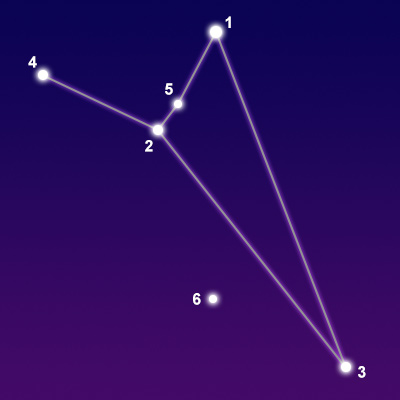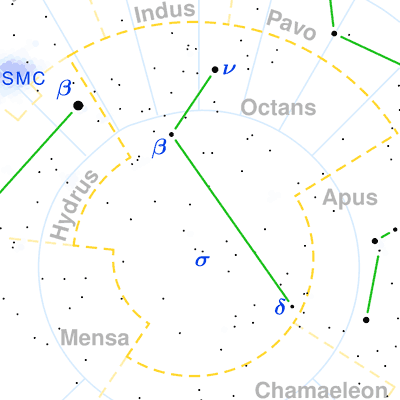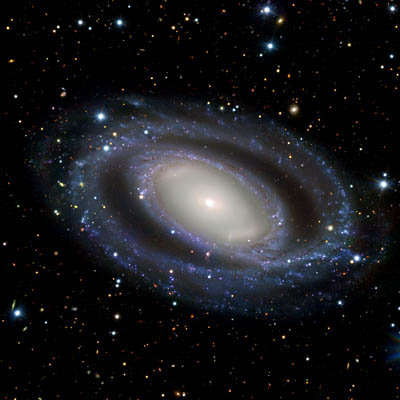Pronunciation:
(OK-tanz)Abbreviation:
OctGenitive:
OctantisRight Ascension:
22 hoursDeclination:
-85 degreesArea in Square Degrees:
291Crosses Meridian:
9 PM, September 20Visible Between Latitudes:
-5 and -90 degreesThe constellation Octans, the octant, is located in the southern hemisphere of the sky. It is only visible at latitudes south of the equator. It is circumpolar which means it is visible all night long. It is a small constellation with a total area of only 291 square degrees. This ranks it 50th in size among the 88 constellations in the night sky. Octans is bordered by the constellations Apus, Chamaeleon, Hydrus, Indus, Mensa, Pavo and Tucana. It also contains the South Celestial Pole.
There is no mythology associated with the constellation Octans. It is one of 14 constellations named by the French astronomer Nicolas Louis de Lacaille in 1752 after his trip to the Cape of Good Hope to study the southern night sky. It is named after the octant, a navigational tool that was the precursor to the modern day sextant. Octans was originally named de Reflexion", which was French for “the reflecting octant”. It eventually became known as Octans Hadleianus after John Gadkey, the English mathematician who invented the octant in 1730.

points of interest below © Sea and Sky

© Torsten Bronger CC BY-SA 3.0
Beta Octantis
Delta Octantis
Theta Octantis
Epsilon Octantis
Polaris Australis
N/A
N/A
N/A
N/A
"Southern Pole"
White Subgiant Star
Orange Giant Star
Orange Giant Star
Red Giant Star
Yellow-White Giant Star
4.14
4.31
4.78
5.16
5.45
Octans contains only faint stars. The most famous star in this constellation is Polaris Australis, the southern pole star. It is the star closest to the south celestial pole. In spite of its significance, the star is extremely dim. Its visual magnitude is only 5.45, which makes it far too dim to be used for navigation. The brightest star in this constellation is Nu Octantis with a visual magnitude of 3.76. It is an orange giant star located about 69 light years from Earth. The second brightest star is Beta Octantis with a magnitude of only 4.14. It is a white subgiant star that lies 140 light years away.
There are no Messier objects in Octans and only a few notable deep-sky objects. NGC 7098 is a beautiful example of a double barred spiral galaxy located approximately 95 million light years from Earth. NGC 7095 is a barred spiral galaxy located about 115 million light years away. Both of these galaxies are extremely faint and can only be seen with very large telescopes.

© European Southern Observatory / CC BY 4.0



